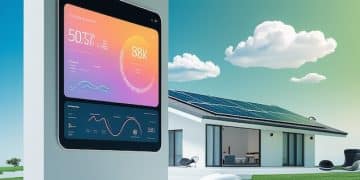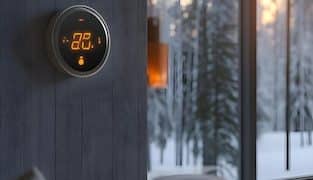Energy-Efficient Smart Thermostats: Save Up to $200 Annually
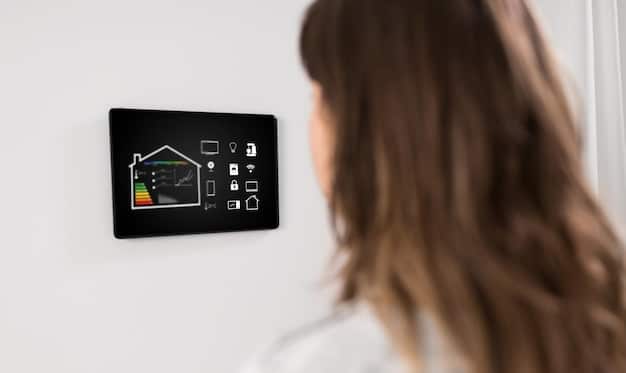
Anúncios
Energy-efficient smart thermostats offer a compelling solution for homeowners seeking to optimize their heating and cooling costs, providing advanced control and automation features that can lead to substantial annual savings, often exceeding $200, while enhancing comfort and reducing environmental impact.
In an era where every household expense is scrutinized, the promise of significant savings on essential utilities like heating and cooling is undeniably appealing. Few home technologies deliver this promise as effectively as energy-efficient smart thermostats. These devices represent a convergence of convenience, control, and considerable cost reduction, offering a modern solution to an age-old challenge: maintaining optimal indoor comfort without breaking the bank.
The Evolution of Thermostats: From Manual to Smart
For decades, controlling our home’s climate was a manual affair. We’d dial up the heat, turn down the AC, often forgetting to adjust it when leaving or returning. This rudimentary approach led to significant energy waste and inflated bills. Thankfully, heating, ventilation, and air conditioning (HVAC) systems have undergone a profound transformation, largely driven by the advent of smart technology.
The journey from a simple on/off switch to the sophisticated Wi-Fi enabled devices we use today has been marked by several key innovations. Early programmable thermostats offered a glimpse into automated climate control, allowing users to set schedules. While a step forward, these often proved cumbersome to program and lacked the adaptability needed for dynamic lifestyles. The real revolution began with the integration of connectivity and artificial intelligence, birthing the smart thermostat.
Programmable vs. Smart: Understanding the Difference
While often used interchangeably, there’s a fundamental distinction between a programmable and a smart thermostat. A programmable thermostat simply allows you to set a fixed schedule – for example, turning down the heat at 9 PM and raising it at 6 AM. It adheres rigidly to this schedule, regardless of whether you’re home or away, or if the weather suddenly changes.
A smart thermostat, on the other hand, learns your preferences, adapts to your routine, and responds to external factors. They move beyond mere scheduling to offer true intelligent control. This adaptability is the core of their energy-saving potential.
- Learning Algorithms: Many smart thermostats observe your temperature adjustments and daily patterns to create personalized schedules automatically.
- Remote Control: Via a smartphone app, you can adjust settings from anywhere, ensuring you never heat or cool an empty house unnecessarily.
- Geofencing: Some models use your phone’s location to detect when you leave or approach home, adjusting temperatures accordingly without manual input.
- Integration: They often integrate with other smart home platforms, like voice assistants and smart lighting, creating a cohesive automated environment.
This evolution highlights a shift from reactive climate control to proactive, intelligent management, where the system anticipates needs and optimizes performance, rather than simply following rigid instructions. The result is a home that’s comfortable when you need it to be, and energy-efficient when you don’t.
In essence, the smart thermostat doesn’t just execute commands; it learns, predicts, and optimizes, making it a powerful tool in the quest for energy efficiency. This intelligent behavior significantly contributes to reducing energy consumption, paving the way for the substantial annual savings that are often touted.
Key Features That Drive Energy Savings
The ability of smart thermostats to significantly reduce energy costs isn’t magic; it’s a direct result of several innovative features working in concert. These functionalities empower homeowners to manage their HVAC systems with unprecedented precision and efficiency.
Advanced Scheduling and Learning Capabilities
Gone are the days of manually adjusting temperatures. Smart thermostats elevate scheduling beyond simple fixed times. Many models incorporate advanced learning algorithms. For instance, a Nest thermostat might observe that you consistently turn down the heat when you leave for work and back up when you return. Over time, it learns this pattern and begins to automate it, even adjusting for variations in your schedule. This “set it and forget it” approach ensures energy isn’t wasted heating or cooling an empty home.
This learning extends to understanding how long it takes for your home to reach a desired temperature. Instead of turning on the AC at 5 PM to be cool by 6 PM, a smart thermostat might activate it earlier, but at a lower intensity, achieving the same comfort level with less energy expenditure. These subtle optimizations, multiplied over days, weeks, and months, lead to considerable savings.
Remote Access and Geofencing Technologies
The convenience of remote access cannot be overstated. Imagine leaving for vacation and forgetting to adjust your thermostat. With a traditional system, you’d be cooling an empty house for days or weeks. A smart thermostat allows you to check and adjust temperatures from anywhere in the world using your smartphone. This immediate control prevents unnecessary energy consumption due to oversight.
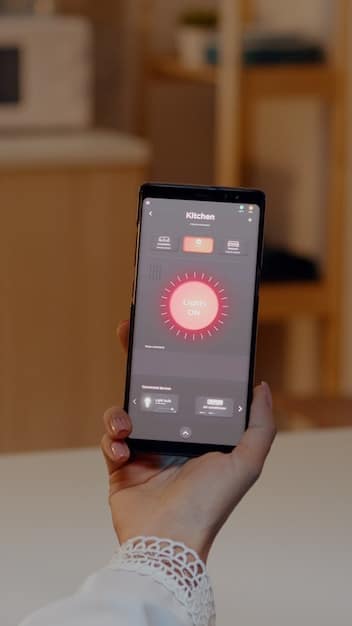
Geofencing takes this a step further. It uses your smartphone’s location services to detect when you’re leaving or returning home. As you drive away, the thermostat automatically enters an energy-saving mode. As you approach, it begins to pre-condition your home, ensuring it’s comfortable by the time you walk through the door. This hands-free automation is incredibly efficient, as it mirrors your actual comings and goings, rather than adhering to a rigid, potentially outdated schedule.
This dynamic adjustment ensures that your HVAC system only operates when and where it is needed most, minimizing wasted energy on heating or cooling unoccupied spaces. The precision offered by geofencing can result in significant energy reductions, contributing directly to lower utility bills.
Energy Reporting and Eco-Feedback
Understanding where your energy goes is the first step to saving it. Smart thermostats provide detailed energy usage reports, often accessible through their companion apps. These reports can show you daily, weekly, and monthly energy consumption patterns, highlighting periods of high usage and potential areas for improvement. Some even offer “eco-feedback,” such as a green leaf icon appearing when you select an energy-efficient temperature setting.
This data empowers you to make informed decisions. You can identify specific times or habits that are driving up your energy consumption and adjust accordingly. For example, if you notice a spike in usage on weekend afternoons, you might realize you’re inadvertently keeping the house too cool while out running errands. The visual feedback and clear data motivate users to adopt more energy-conscious habits, magnifying the thermostat’s inherent energy-saving capabilities.
By empowering users with data and control, smart thermostats transform passive climate control into an active management process, leading to tangible energy savings. Each
feature works in harmony to reduce energy consumption, ensuring that the savings of up to $200 annually are not just a possibility, but an attainable reality for many households.
Choosing the Right Smart Thermostat for Your Home
With a growing market of energy-efficient smart thermostats, selecting the ideal model for your home can feel daunting. Factors such as compatibility, features, and overall cost require careful consideration. The right choice ensures maximum energy savings and a seamless integration into your lifestyle.
Compatibility with HVAC Systems
Before splinting on a new smart thermostat, the first and most critical step is to check its compatibility with your existing HVAC system. Most smart thermostats are designed to work with a wide range of systems, including conventional (forced air, hydronic) and heat pump configurations, as well as single-stage, multi-stage, or zoned systems. However, some older systems, particularly those without a common wire (C-wire), might require additional installation steps or a specific type of smart thermostat.
Many manufacturers provide an online compatibility checker to guide you. It typically involves looking at the wiring terminals on your current thermostat. Ensuring compatibility upfront prevents installation headaches and guarantees the new device will function properly with your heating and cooling equipment.
- C-Wire Requirement: A common wire (C-wire) provides continuous power to the smart thermostat, crucial for Wi-Fi and advanced features. If your system lacks one, you might need an adapter or professional installation.
- System Type: Verify if your smart thermostat supports your specific HVAC system (e.g., conventional, heat pump, boiler).
- Voltage: Most residential systems are low voltage (24V AC), but always double-check.
Ignoring compatibility checks can lead to unexpected costs or the inability to use certain features, undermining the very purpose of upgrading to a smart thermostat.
Features to Consider: Learning, Geofencing, and Integrations
Beyond basic temperature control, smart thermostats offer a diverse array of features. Prioritize those that align with your lifestyle and energy-saving goals. If you have an unpredictable schedule, a thermostat with robust learning capabilities like the Nest Learning Thermostat will be highly beneficial, as it adapts to your changing patterns automatically.
For those who frequently leave and return home, geofencing (offered by brands like Ecobee and Honeywell Home) is a powerful tool to prevent heating or cooling an empty house. This feature relies on your smartphone’s location to trigger energy-saving modes when you’re away and return to comfort mode as you approach.
Consider smart home ecosystem integrations. If you already use Amazon Alexa, Google Assistant, Apple HomeKit, or Samsung SmartThings, choose a thermostat that seamlessly integrates with your preferred platform. This allows for voice control and unified management of your smart home devices, enhancing convenience and efficiency.
Energy reporting and eco-feedback features can also be valuable. They provide insights into your energy consumption, helping you identify opportunities for further savings. Some models even offer utility rebate finder tools, further sweetening the deal by pointing you to potential financial incentives.
Installation: DIY vs. Professional Help
Many modern smart thermostats are designed for DIY installation, especially if your current system has a C-wire. Manufacturers provide detailed instructions, and often, app-guided setup processes that simplify the wiring and configuration. Basic tools like a screwdriver and a flashlight are usually all that’s required.
However, if your system lacks a C-wire, if you have a complex multi-zone HVAC system, or if you’re simply uncomfortable with electrical wiring, professional installation is a prudent option. HVAC technicians can ensure proper wiring, optimize settings for your specific system, and troubleshoot any issues, guaranteeing peak performance and energy efficiency from day one.
While DIY saves money on installation, improper setup can negate potential energy savings or even damage your HVAC system. Weigh your comfort level and the complexity of your system before deciding whether to tackle the installation yourself or call in a pro. Ultimately, the best smart thermostat is one that is properly installed and configured to maximize its energy-saving capabilities for your unique home and lifestyle.
Maximizing Savings: Beyond the Thermostat
While an energy-efficient smart thermostat is a powerful tool for reducing heating and cooling costs, its full potential is realized when combined with broader home energy management strategies. The thermostat optimizes how your HVAC system runs, but other factors determine how efficiently your home retains temperature.
Insulation and Weatherization Improvements
Even the smartest thermostat can’t counteract a leaky house. Poor insulation and air leaks are major culprits in energy waste, allowing conditioned air to escape in summer and warm air to dissipate in winter. Addressing these issues creates a tighter, more energy-efficient envelope for your home. Begin by assessing your attic, walls, and crawl spaces for adequate insulation and consider adding more where needed. Sealing air leaks around windows, doors, electrical outlets, and plumbing penetrations is equally crucial. Techniques include:
- Caulking and Weatherstripping: Apply around window and door frames to seal gaps.
- Outlet Gaskets: Install foam gaskets behind outlet and switch plates on exterior walls.
- Duct Sealing: Seal leaks in your HVAC ductwork, as leaky ducts can waste 20-30% of conditioned air.
- Insulating Pipes: Insulate hot water pipes and the water heater to reduce heat loss.
These improvements create a more stable indoor environment, reducing the workload on your HVAC system and allowing your smart thermostat to maintain comfort with less energy input. Think of it as ensuring the bucket has no holes before you fill it with water.
Regular HVAC System Maintenance
A smart thermostat can send commands to your HVAC system, but it can’t make an inefficient system perform better. Regular maintenance is paramount for ensuring your heating and cooling equipment runs at peak efficiency. Neglecting maintenance can lead to reduced efficiency, increased energy consumption, and premature system failure. Key maintenance tasks include:
Annually, schedule professional HVAC tune-ups. Technicians can clean coils, check refrigerant levels, inspect electrical components, and identify potential issues before they become costly problems. These routine checks keep your unit running smoothly and efficiently, directly impacting your energy bill.
Furthermore, ensure you clean your smart thermostat’s sensors regularly, as dust build-up can affect their accuracy. A well-maintained HVAC system allows the smart thermostat to operate effectively, translating into tangible savings and prolonged equipment life.
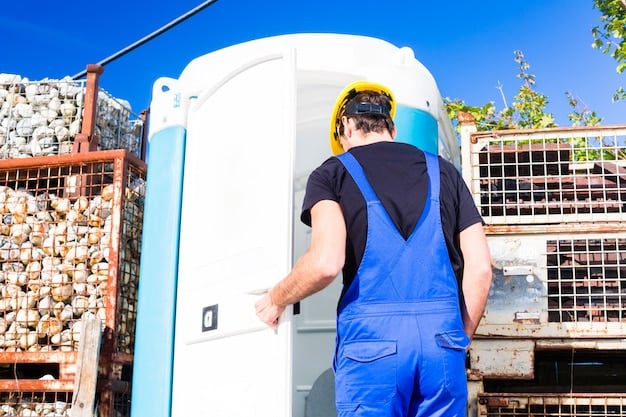
Strategic Use of Natural Ventilation and Shading
Sometimes, the best climate control is free. Strategic use of natural ventilation and shading can significantly reduce your reliance on your HVAC system, even with a smart thermostat. In milder weather, opening windows and doors strategically can create cross-ventilation, naturally cooling your home without using any energy. This approach is particularly effective in the mornings and evenings when outdoor temperatures are lower.
During hot summer days, minimizing heat gain through windows is crucial. Use blinds, curtains, or awnings to block direct sunlight, especially on south and west-facing windows. Planting deciduous trees on the sunny sides of your home can also provide natural shade in the summer while allowing sunlight to warm your home in the winter once their leaves fall. These passive strategies complement your smart thermostat by reducing the overall heating and cooling load on your home, further amplifying your energy savings.
By integrating these practices—improving insulation, maintaining your HVAC system, and leveraging natural environment—you create a holistic approach to home energy management. The smart thermostat then becomes the conductor of an already efficient orchestra, orchestrating maximal comfort with minimal energy expenditure, and solidifying the potential for significant annual savings.
The Environmental Impact and Beyond
The benefits of energy-efficient smart thermostats extend far beyond individual household savings. Their widespread adoption contributes significantly to broader environmental goals and enhances overall home comfort and value.
Reducing Your Carbon Footprint
Heating and cooling are major contributors to residential energy consumption, often accounting for more than half of a typical home’s energy use. This energy frequently comes from fossil fuel-based power plants, leading to substantial carbon emissions. By reducing your energy consumption through the intelligent optimization offered by a smart thermostat, you directly decrease the demand for this energy.
Every kilowatt-hour saved diminishes your home’s reliance on the grid, leading to a smaller personal carbon footprint. If millions of homes adopt and effectively use these devices, the cumulative effect can be profound, contributing to a measurable reduction in greenhouse gas emissions at a societal level. This move towards more efficient energy use is a critical step in combating climate change, demonstrating that even seemingly small changes in individual behavior can scale up to significant environmental benefits.
Choosing a smart thermostat, therefore, isn’t just a financial decision; it’s an environmentally conscious one, aligning personal savings with global sustainability efforts. It exemplifies how modern technology can empower consumers to make greener choices without sacrificing comfort.
Enhanced Comfort and Convenience
While energy savings are a primary driver, the enhanced comfort and convenience offered by smart thermostats are equally compelling. Imagine never having to return to an uncomfortably hot or cold home. With geofencing and remote access, your home is always at the perfect temperature when you arrive, whether you’re coming back from work or a long trip.
The learning capabilities ensure consistent comfort by understanding your preferences and adjusting proactively. No more fiddling with settings multiple times a day. The intuitive interfaces and smartphone apps make scheduling and adjustments simpler than ever, removing the frustration often associated with older programmable models. Automated diagnostics can even alert you to potential HVAC issues before they become major problems, preventing unexpected discomfort or costly breakdowns.
This seamless integration of technology into daily life transforms climate control from a chore into an effortless, background operation, allowing you to simply enjoy your living space. The convenience factor often becomes apparent only after experiencing the ease of a truly smart home environment.
Increased Home Value and Rebates
Investing in energy-efficient technologies like smart thermostats can also increase your home’s market value. As homebuyers become more environmentally conscious and focused on long-term operating costs, homes equipped with smart devices and energy-saving features are increasingly appealing. A smart thermostat signals a modern, well-maintained home that is designed for efficiency, potentially making it more attractive to prospective buyers and justifying a higher asking price.
Furthermore, many utility companies and local governments offer rebates and incentives for homeowners who install energy-efficient smart thermostats. These programs are designed to encourage energy conservation and can significantly offset the initial purchase and installation costs, making the investment even more financially attractive. It’s always worth checking with your local utility provider for available programs, as these rebates can sometimes cover a substantial portion of the cost, accelerating your return on investment and amplifying your savings.
In essence, smart thermostats offer a comprehensive package: undeniable financial savings, a positive environmental impact, enhanced living comfort, and an uptick in property value. It’s a technology that truly pays for itself in multiple ways, solidifying its place as a cornerstone of modern, sustainable living.
Common Misconceptions and Realities
Despite the clear benefits, several misconceptions persist about smart thermostats, often leading to hesitation among potential users. Addressing these clarifies the true advantages and practicalities of these devices.
“They’re Too Complicated to Use”
One common concern is that smart thermostats are overly complex and difficult to operate. This perception often stems from experiences with older, frustratingly programmable thermostats. The reality is quite the opposite. Modern smart thermostats are designed with user-friendliness at their core.
Their intuitive interfaces, often featuring touchscreens and clear visual cues, make direct adjustments straightforward. More importantly, companion smartphone apps provide a highly accessible portal for control, allowing users to make precise adjustments with a few taps. Features like learning algorithms even reduce the need for constant manual interaction; the thermostat learns your habits and automates the process. Initial setup might involve Wi-Fi connection and some basic programming, but app-guided instructions and readily available online tutorials simplify this process, making them far less daunting than perceived.
Many users find that after a short learning curve, the convenience and automation far outweigh any initial complexity, ultimately saving time and effort compared to traditional thermostats.
“The Savings Aren’t Significant Enough”
Some skepticism revolves around the actual energy savings, with many wondering if the promised “up to $200 annually” is truly attainable. While individual savings vary based on factors like climate, existing insulation, and usage patterns, numerous studies and user experiences confirm substantial reductions in heating and cooling costs.
Major manufacturers like Nest (now Google Nest) reported average savings of 10-12% on heating and 15% on cooling in independent studies, translating to an average of $131-$145 per year. Ecobee also cites average savings of 23% on heating and cooling costs. For households with higher energy consumption or older, less efficient systems, these percentages can easily translate to savings well over $200 annually. The key to maximizing these savings lies in actively utilizing features like remote control, learning modes, and geofencing to prevent wasted energy, rather than just using it as a fancy digital thermostat.
The cumulative effect of precise temperature control, adaptive scheduling, and prevention of overheating/overcooling translates into tangible and significant financial benefits over time, making the investment worthwhile for most homeowners.
These devices are designed to pay for themselves through energy savings, and for many households, the payback period is surprisingly short, often within two years. Considering their lifespan, the long-term savings far exceed the initial outlay, making them a wise financial decision.
“They’re Only for Tech-Savvy People”
A final misconception is that smart thermostats are exclusive to tech enthusiasts. While they are undoubtedly smart, their widespread appeal lies in their accessibility. Designed for the everyday homeowner, they simplify energy management, not complicate it.
Many brands offer streamlined interfaces and guided setup processes that cater to users of all technical comfort levels. The “set and forget” learning features mean that even those who prefer minimal interaction can still reap the benefits of energy optimization without needing to delve into complex settings. Voice control integration with popular smart assistants further simplifies daily use, making temperature adjustments as easy as a spoken command.
The reality is that smart thermostats democratize energy efficiency, making sophisticated climate control available and understandable for everyone. Their design philosophy leans heavily towards automation and ease of use, ensuring that anyone can install one and immediately start enjoying improved comfort and reduced energy bills, regardless of their technical prowess.
The Future of Smart Thermostats
The journey of the smart thermostat is far from over. As technology continues to evolve, these devices are poised to become even more integrated, intuitive, and impactful in our homes and on the wider energy grid. The future promises enhanced intelligence and deeper connectivity.
Integration with Smart Home Ecosystems
The trend towards seamless integration with broader smart home ecosystems will only accelerate. Future smart thermostats will likely communicate even more fluidly with other smart devices, enhancing their energy-saving capabilities. Imagine your smart thermostat coordinating with smart blinds to close when the sun is strongest, or with smart ventilation systems to optimize airflow based on indoor air quality sensors. This deeper level of interoperability will create a truly holistic home environment where various systems work in concert to maximize efficiency and comfort without constant manual intervention.
Voice control will become even more sophisticated, allowing for natural language commands and proactive suggestions. As these platforms mature, controlling your home’s climate will become an almost subconscious experience, always optimized for your preferences and external conditions.
Predictive Maintenance and AI Enhancements
The next frontier for smart thermostats involves a greater emphasis on predictive analytics and artificial intelligence. Currently, some models offer basic diagnostic alerts. In the future, they will likely leverage AI to monitor HVAC system performance with far greater precision, identifying subtle anomalies that could indicate impending breakdowns. By analyzing patterns in energy consumption, temperature fluctuations, and fan operation, these thermostats could predict problems before they occur, alerting homeowners to schedule maintenance proactively.
This predictive capability would not only save money on costly emergency repairs but also ensure continuous optimal energy efficiency. AI models could also learn to anticipate personal comfort needs even more accurately, taking into account individual metabolic rates, clothing choices, and even mood, to create an unprecedented level of personalized climate control.
This proactive management of HVAC systems could redefine the relationship between homeowners and their climate control, transitioning from reactive problem-solving to anticipatory maintenance.
Roles in Grid Optimization and Demand Response
Beyond individual home savings, smart thermostats are increasingly playing a critical role in larger energy grids. Many utility companies are implementing “demand response” programs, where they offer incentives for homeowners to allow their smart thermostats to make small, temporary adjustments during periods of peak energy demand.
For example, on a scorching summer afternoon when the grid is stretched thin, a utility might slightly raise the default temperature on enrolled thermostats for an hour or two. These minor adjustments, when aggregated across thousands of homes, can significantly reduce strain on the grid, prevent blackouts, and reduce the need for expensive, inefficient peaking power plants. Homeowners are typically compensated for their participation.
As renewable energy sources become more prevalent, smart thermostats can also help manage the intermittency of solar and wind power by shifting energy consumption to times when green energy is most abundant. This integration transforms smart thermostats from mere household appliances into active participants in a smarter, more sustainable energy ecosystem, demonstrating their potential far beyond simply saving individual homeowners money.
The future of smart thermostats lies in their ability to become indispensable components of connected, efficient, and sustainable homes, actively contributing to both personal well-being and global energy goals.
| Key Point | Brief Description |
|---|---|
| 💰 Annual Savings | Smart thermostats can save homeowners up to $200+ annually on heating/cooling. |
| 🧠 Smart Features | Learning algorithms, remote control, and geofencing optimize energy usage. |
| 🌱 Environmental Impact | Reduces carbon footprint by decreasing overall energy demand. |
| 🏠 Home Value | Enhances home value & eligibility for utility rebates. |
Frequently Asked Questions About Smart Thermostats
Actual savings vary, but many users report reductions between 10% and 23% on heating and cooling costs, with average annual savings ranging from $130 to over $200. Factors like your geographic location, existing insulation, and how you utilize the thermostat’s smart features will influence these figures. Consistent use of learning modes, remote control, and geofencing greatly maximizes savings potential.
Many smart thermostats are designed for DIY installation, especially if your home has a C-wire (common wire). Manufacturers often provide clear, app-guided instructions. However, if your system lacks a C-wire, or if you’re uncomfortable with basic electrical wiring, professional installation is recommended to ensure proper setup and functionality. Most installations typically take less than 30 minutes.
Yes, many smart thermostats, such as the Nest Learning Thermostat, employ sophisticated algorithms to learn your temperature preferences and daily routines. They observe when you adjust the temperature, when you leave and return home, and even how long it takes to heat or cool your space. Over time, they build a personalized schedule, automating adjustments to optimize comfort and energy savings without constant manual input.
Geofencing is a feature that uses your smartphone’s location to detect when you leave or approach your home. When you’re away, the thermostat automatically switches to an energy-saving mode. As you get closer to home, it begins to pre-condition your space so it’s comfortable upon your arrival. This hands-free automation prevents heating or cooling an empty house, leading to significant energy and cost savings.
Absolutely. Many local utility companies and government programs offer rebates, discounts, or tax credits for installing energy-efficient smart thermostats. These incentives aim to encourage energy conservation and reduce strain on electrical grids. It’s highly advisable to check with your specific utility provider or local energy department regulations, as these programs can significantly reduce the upfront cost of your smart thermostat.
Conclusion
The journey toward smarter, more sustainable living is rapidly gaining momentum, and energy-efficient smart thermostats stand at the forefront of this evolution in home technology. By merging convenience, intelligence, and significant cost savings, they offer a compelling solution for modern households looking to optimize their energy consumption. From their ability to learn and adapt to individual routines, to providing remote control and invaluable energy reporting, these devices empower homeowners to take charge of their climate control and reduce their environmental footprint simultaneously.
As explored, the benefits extend beyond mere financial savings, contributing to enhanced home comfort, increased property value, and a crucial step towards a more resilient energy future. While misconceptions about complexity or insufficient savings may linger, the reality consistently demonstrates their user-friendliness and tangible impact. For any homeowner seeking to lower utility bills, embrace intelligent home management, and contribute to a greener planet, investing in an energy-efficient smart thermostat is not just a smart choice for today, but a strategic move for the long term.
